Introduction: Cabernet Sauvignon AOC Valais red wines
This wine is of course just one of many excellent Valais red wines that we have in our range. In our online shop you will also find a large selection of rosé wines, red wines, sparkling wines and digestifs.
If you are looking for a gift, we recommend the various tasting boxes from our gift service, for example, or a gift voucher, which gives the recipient a free choice in our online shop.
The most important facts at a glance
Cabernet Sauvignon is the most widely cultivated grape variety in the world. On more than 310,000 hectares of vineyards, the so-called “stelle”, the grape variety can be found in virtually every well-known region where wine is grown.
The grape variety enjoys a high reputation and is considered by many wine lovers to be the best red grape variety. This is one of the reasons why it is referred to as Cépage noble and thus counts as a noble grape variety.
Due to its thick skin, the grape prefers at least a temperate climate so that it can fully ripen and therefore ripens late. Under ideal growing conditions, the grapes develop a high content of tannins, acidity and fruit. This makes the grape variety ideal for barrique ageing as well as for long bottle ageing.
Grape DNA analyses carried out in 1971 revealed that the Cabernet Sauvignon grape variety originated from a cross between the two varieties Cabernet franc and Sauvignon blanc.
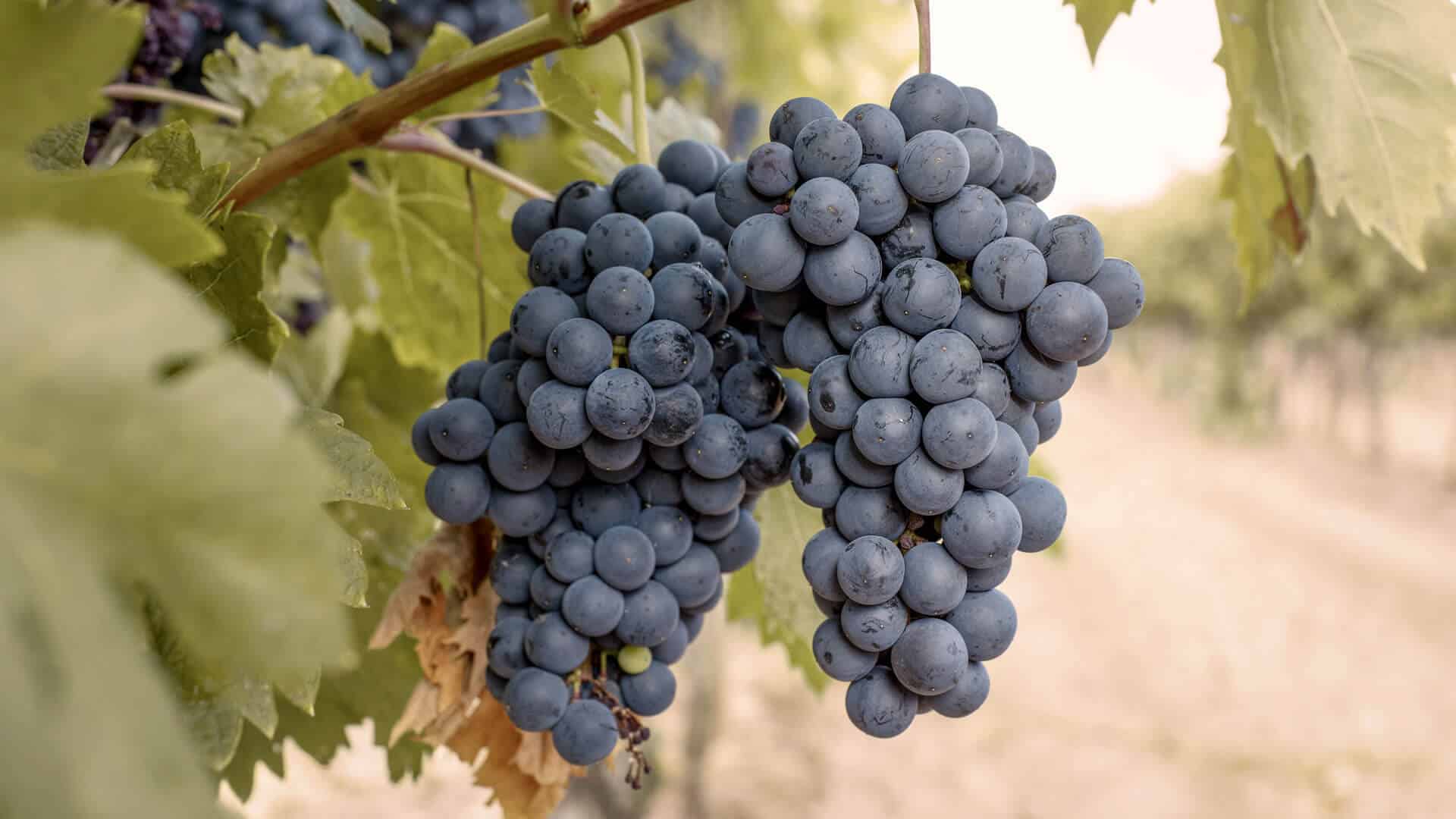
Origin, origins & significance of the Cabernet Sauvignon grape variety
The red wine variety Cabernet Sauvignon is native to the Gironde department, also known as Bordelais in France, not far from Bordeaux. It grows there mainly in the Médoc and is often blended with the Merlot grape variety by French winegrowers, depending on the degree of ripeness. Merlot softens the tannins of Cabernet Sauvignon and, thanks to its higher alcohol content, produces rounder, fuller-bodied, more harmonious and softer wines in years when the Cabernet Sauvignon grape cannot fully ripen.
Of the more than 310,000 hectares of vines cultivated worldwide, China accounts for the lion’s share (160,000 hectares), followed by France and Chile. In Switzerland, just over 60 hectares are cultivated, mainly in Valais but also in Ticino.
The Cabernet Sauvignon variety is the result of a natural cross between the Cabernet franc and Sauvignon blanc grape varieties. While the grape variety is often blended with other red wine grape varieties in wine-growing regions with a temperate climate such as Bordeaux, pure red wines are produced in the New World (Brazil, Australia).
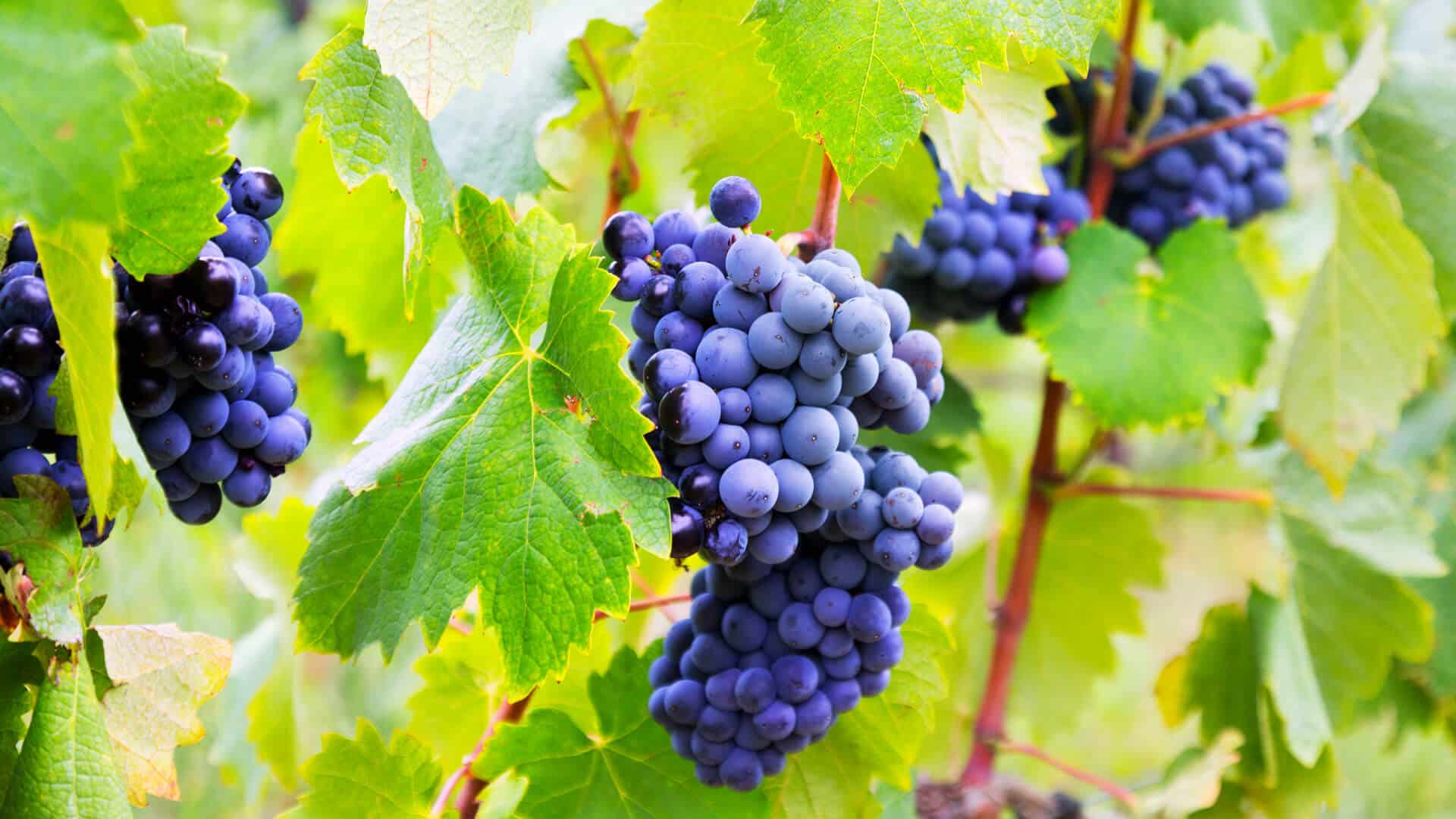
Characteristics of the Cabernet Sauvignon grape: growth, maturity and yield
This grape variety is a late-ripening variety with a thick skin, which is not harvested until early to mid-October. This also means that it sprouts later in spring than other grape varieties and thus avoids the risk of spring frost.
The thick skin of the Cabernet Sauvignon grape significantly influences the body and flavor profile of the wine. In cooler climates, the grapes have less body, resulting in lighter-bodied wines. The thick skins contribute to a high tannin content and concentrated fruitiness, which ultimately influences the aging potential and flavor development of the wine.
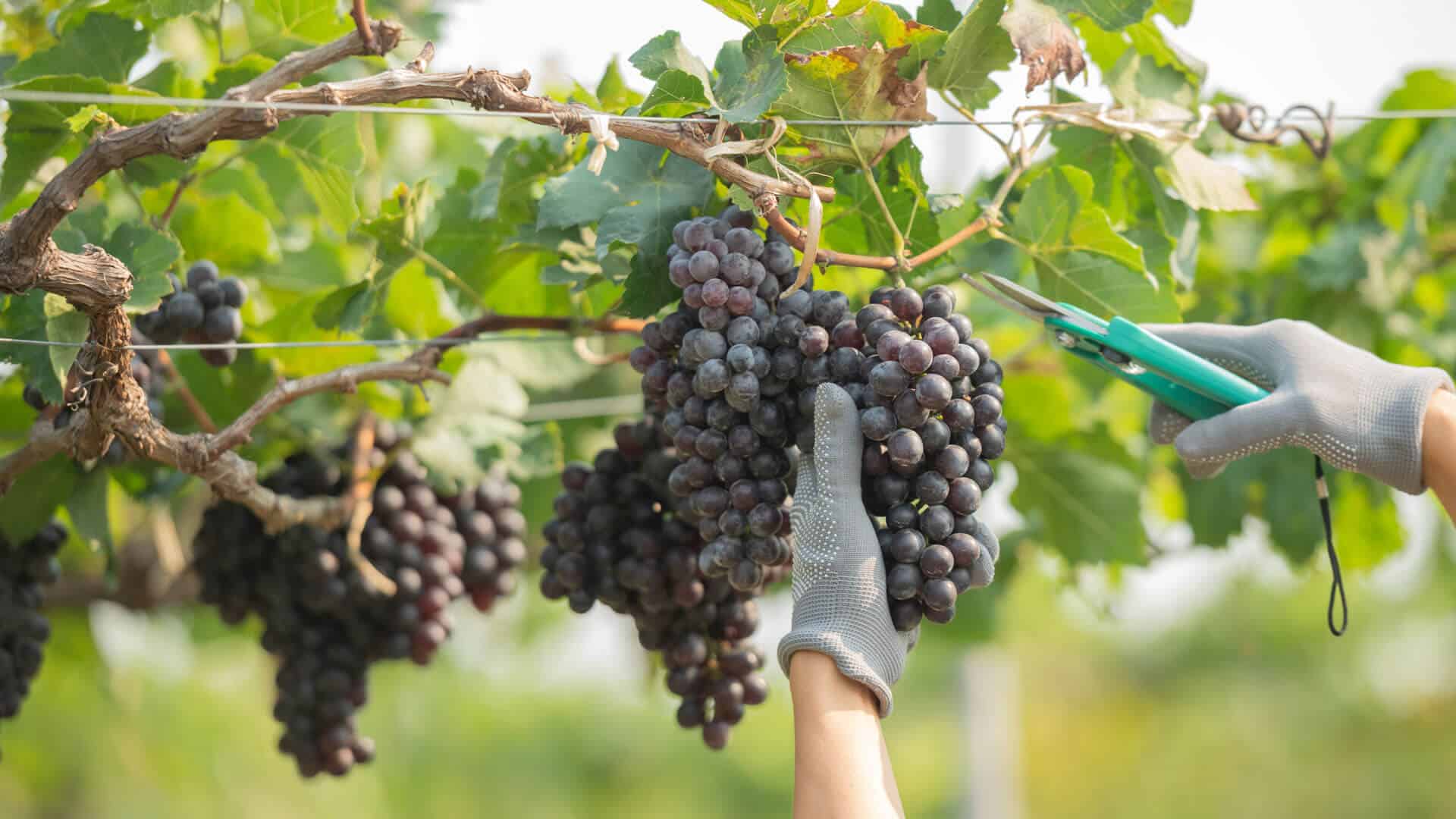
On the other hand, the plant, which is characterized by upright and vigorous growth, is more susceptible to various fungal diseases such as powdery mildew. As this variety produces comparatively few stingy shoots, the amount of foliage work required in the vineyards is much lower than for other varieties.
Due to its high content of tannins and acidity, Cabernet Sauvignon is often blended with other grape varieties such as Merlot, Syrah or Cabernet franc, but also with Carmenère and Malbec.
Where the grape can fully ripen, it is also marketed as a single-varietal red wine with high complexity and longevity.
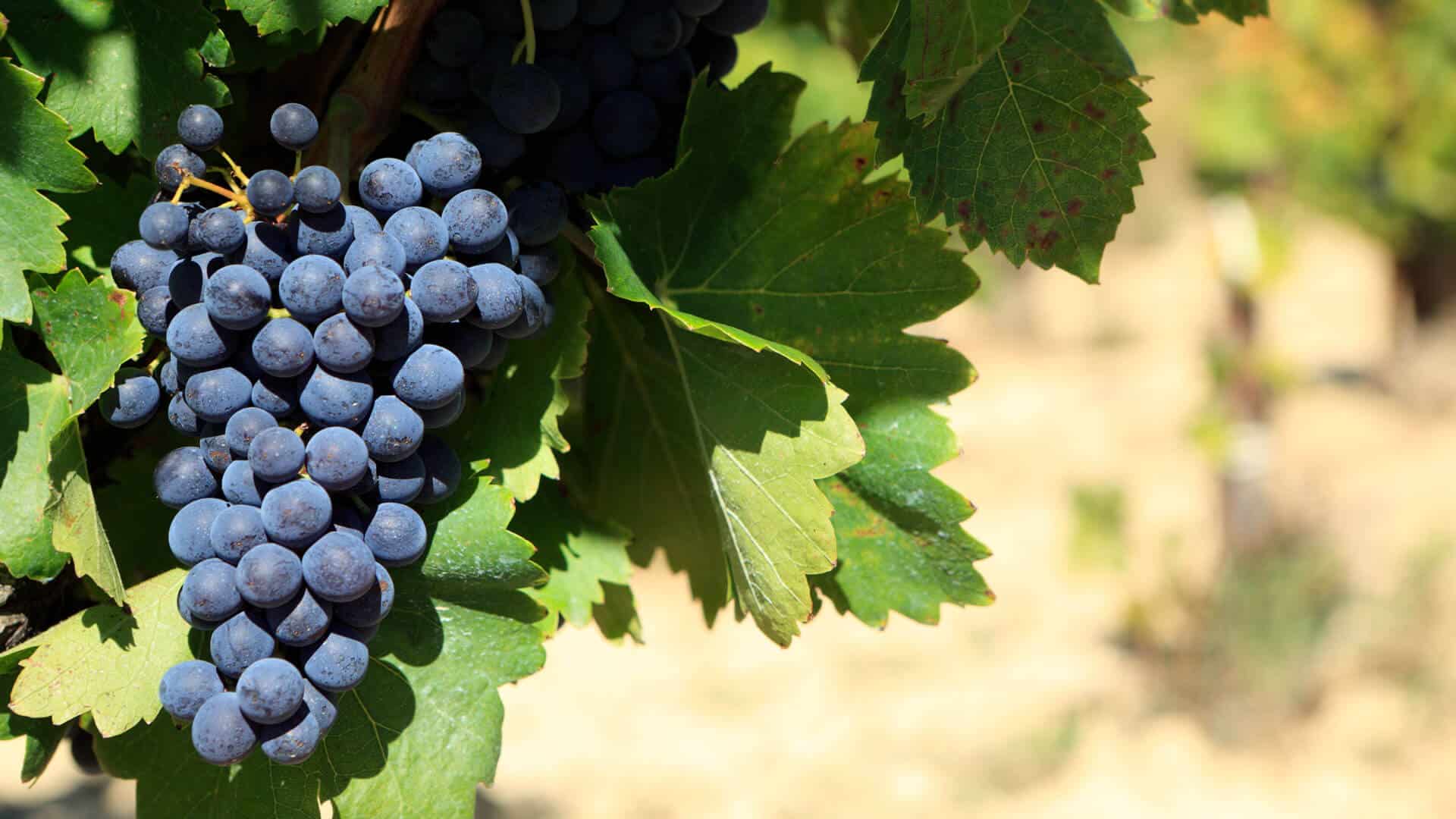
Taste profile of Cabernet Sauvignon: strong tannins, concentrated fruit and high acidity
Wines from this grape variety are usually made into dry wines worldwide. In its youth, the wine from the Cabernet Sauvignon grape is fruity, rough and tannic with a strong “nose”. Of course, a red wine made from the Cabernet Sauvignon grape varies depending on the country and region, as the terroir has a decisive influence on the primary aromas. Nevertheless, there are several common characteristics of the Cabernet Sauvignon grape in the glass.
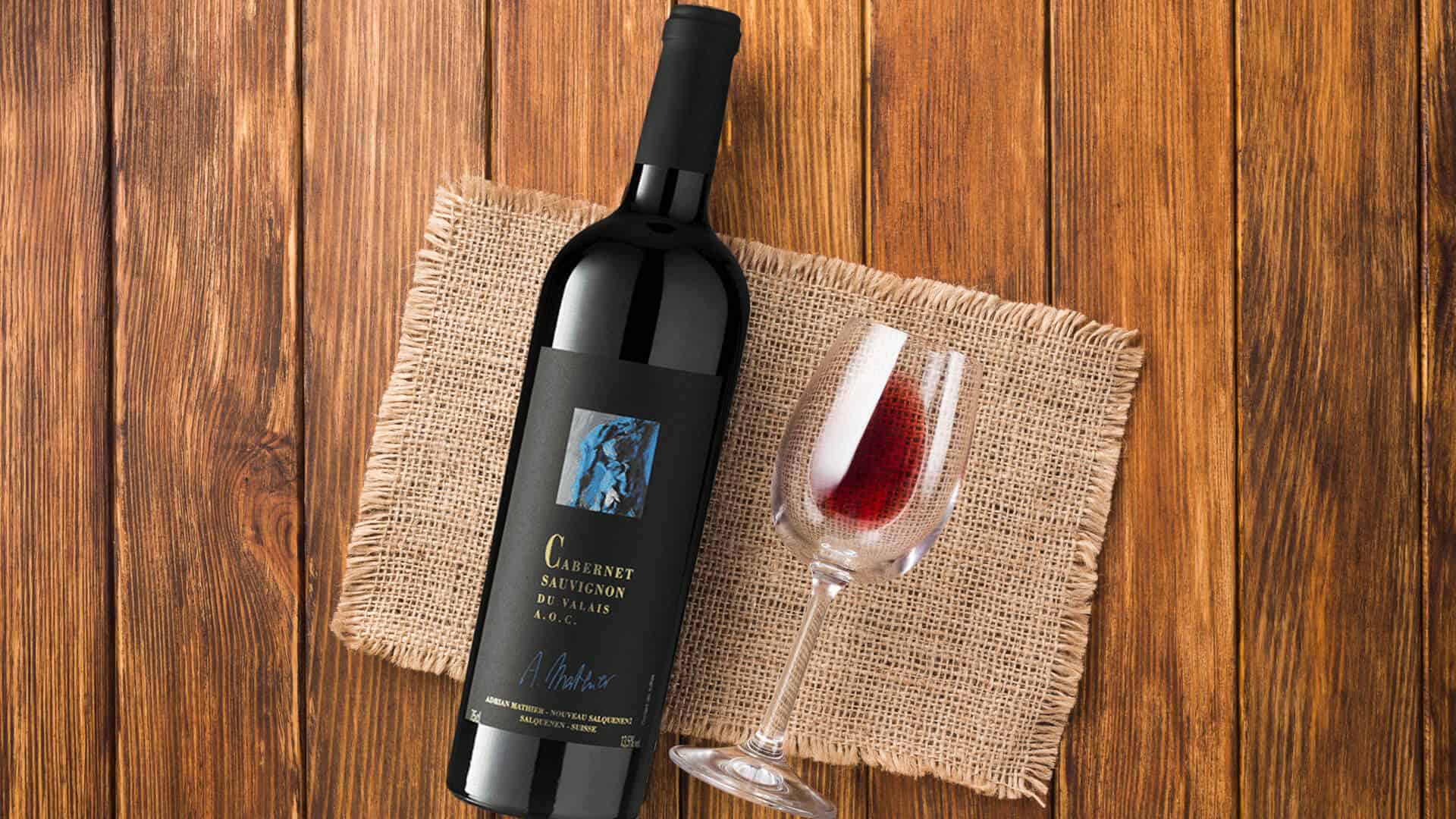
A red wine from this grape variety is often described as “noble”, “austere” or “reserved”, as this red wine often initially has something unapproachable about it. With the necessary maturing time, the rather hard-looking tannins then change into an unmistakable spicy, aromatic fruit flavor with a unique complexity that is typical of the Cabernet Sauvignon grape.
The red wines from the Cabernet Sauvignon grape also offer a very broad and diverse range of fruit aromas. These include blackcurrant fruit (often reminiscent of liquorice) as well as aromas of cedar wood, herbaceous aromas and even green bell pepper. Red wines from this grape variety, which is a natural cross between the Cabernet Franc and Cabernet Sauvignon varieties, are often characterized by expressive fruit, dignity, size and depth.
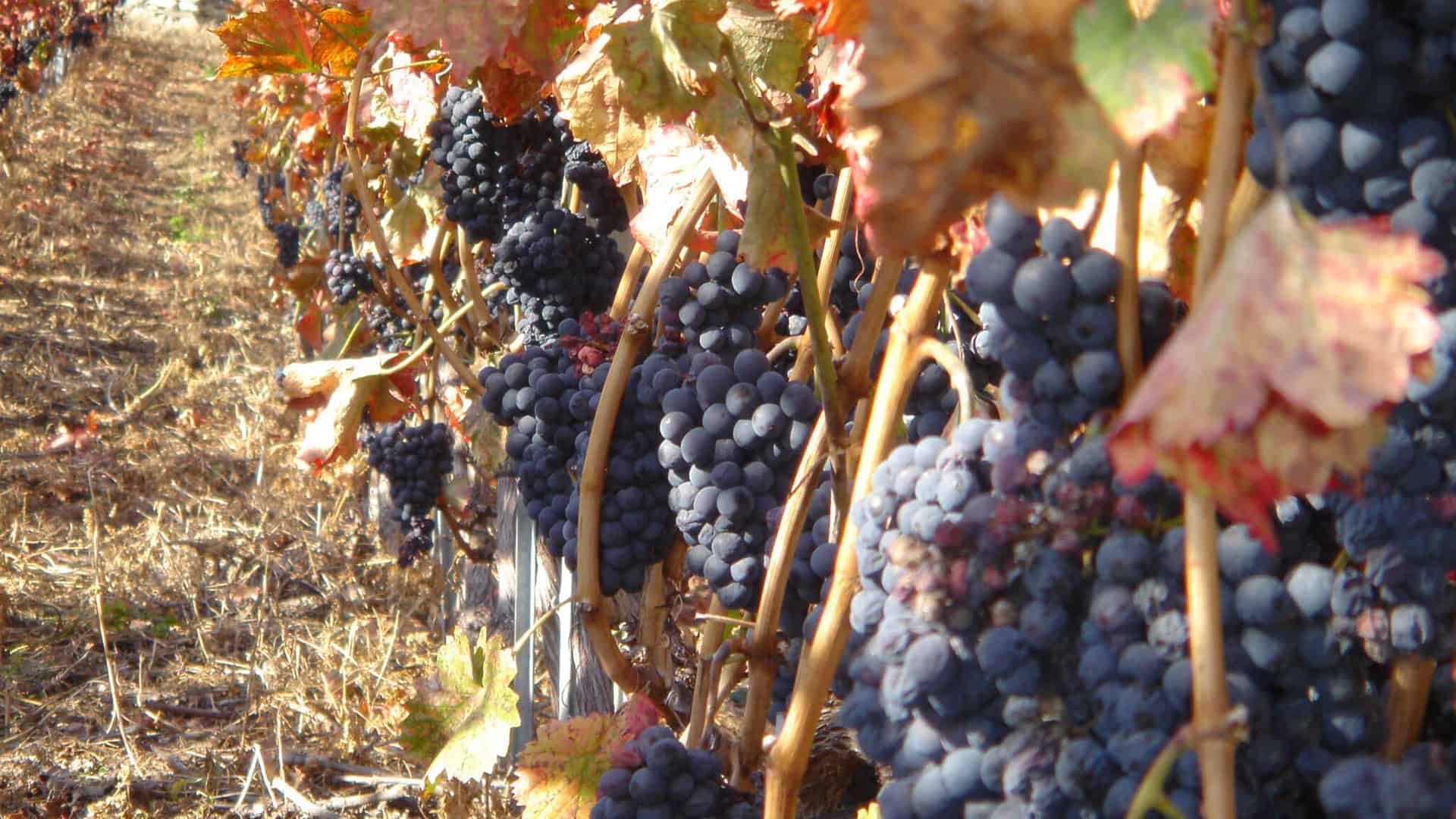
Cabernet Sauvignon and its synonyms
Although the variety is known almost everywhere in the world exclusively under the name Cabernet Sauvignon, there are still more than 60 synonyms that indicate its widespread distribution.
In its native Bordelais region and in a few other European countries, the grape is known by synonyms such as Bidure, Vidure or Sauvignonne. In Grave in France, it is also called Bouchet, Bouchet Sauvignon or Petit Bouchet, but it is also known as Burdeos Tinto in Spain or Bordeaux in Switzerland. And in Eastern Europe, the names of famous Bordeaux chateaux are often used as designations.
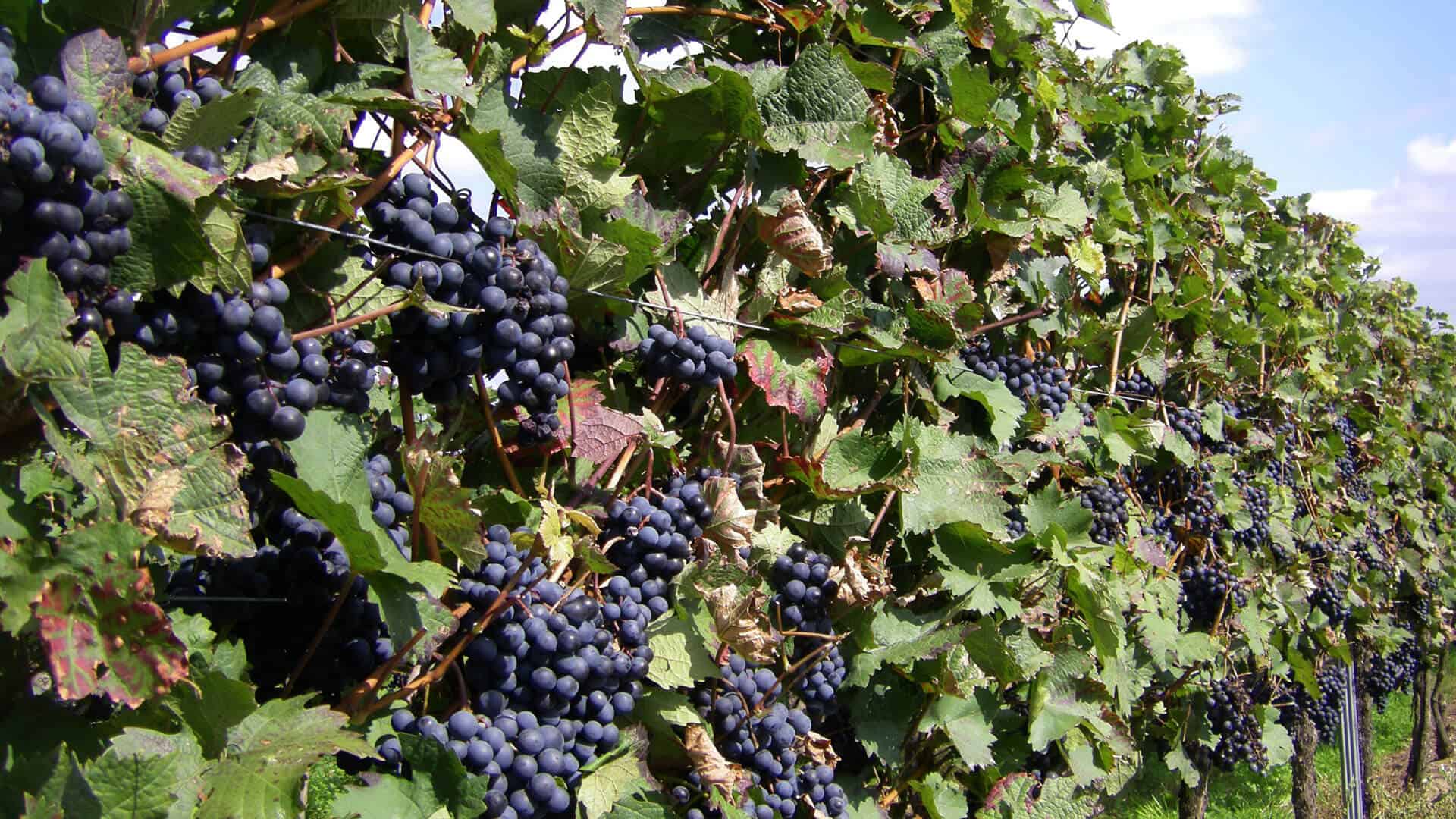
Cabernet Sauvignon and barrique ageing
Due to its high content of tannins and acidity, Cabernet Sauvignon is particularly suitable for ageing in barrique barrels, where this wine gains in complexity and the secondary aromas can develop further. The combination with oak wood aromas also makes the wines smoother and longer-lasting, allowing them to mature into excellent wines over decades.
Cabernet Sauvignon and food: The best combinations
A Cabernet Sauvignon is particularly effective in the kitchen as an accompaniment to strong, aromatic and spicy dishes. Whether rich pasta dishes, dishes with aromatic mushrooms and mushroom sauces or meat dishes of game and lamb. This red wine is a good companion at the table thanks to its fruit complexity, tannins and acidity. On the contrary, this red wine does not need to shy away from spicy poultry creations or strongly seasoned dishes.

Interesting facts about Cabernet Sauvignon
Here is an overview of important facts about the Cabernet Sauvignon grape variety.
What kind of wine is Cabernet Sauvignon?
The Cabernet Sauvignon grape variety is known for its red wines, which typically have a bouquet of blackcurrant, a hint of green bell pepper, black pepper and cedar wood. This is another reason why it is one of the most popular blended vines in the world. In some regions, particularly in the New World, single-varietal red wines are also made from the Cabernet Sauvignon grape.
What does Cabernet wine taste like?
The aroma and taste of Cabernet Sauvignon red wines is characterized by a deep dark color and the typical aroma of blackcurrants (cassis), which is complemented by notes of cedar wood, mint, graphite and dark chocolate. The wine is known for its concentrated fruit with pronounced tannins and intense acidity.
What is the difference between Merlot and Cabernet?
Merlot red wines have a lower tannin content and a predominantly subtle acidity. Wine beginners often prefer Merlot, as wines from this grape variety reach their drinking maturity much earlier. They are also uncomplicated wines that are a lot of fun even at a young age.
What is the difference between Cabernet Sauvignon and Sauvignon Blanc?
The red wine variety Cabernet Sauvignon is the result of a cross between the white wine grape variety Sauvignon Blanc and the red wine grape variety Cabernet Franc. The Cabernet Sauvignon grape ripens much later than the Chardonnay and Riesling varieties, for example. For this reason, the Cabernet Sauvignon grape prefers warmer locations and regions.
Does Cabernet Sauvignon have a lot of acidity?
As recently as the 18th century, the wine made from Cabernet Sauvignon grapes, which are the result of a cross between the white grape variety Sauvignon blanc and the red grape variety Cabernet franc, was described as undrinkable. This is mainly due to the fact that young wines from this particular grape variety have a high tannin and acidity content.
Which is better Merlot or Cabernet Sauvignon?
Compared to Cabernet Sauvignon, Merlot has fewer tannins and less acidity. Merlot is also less long-lived, but has a higher alcohol content than Cabernet. The exact origin of the Merlot grape is largely unknown. Merlot is more accessible, fruitier and softer in taste, which makes it versatile and easier to combine. Cabernet Sauvignon, on the other hand, is characterized by a firmer and more intense structure and higher acidity.

